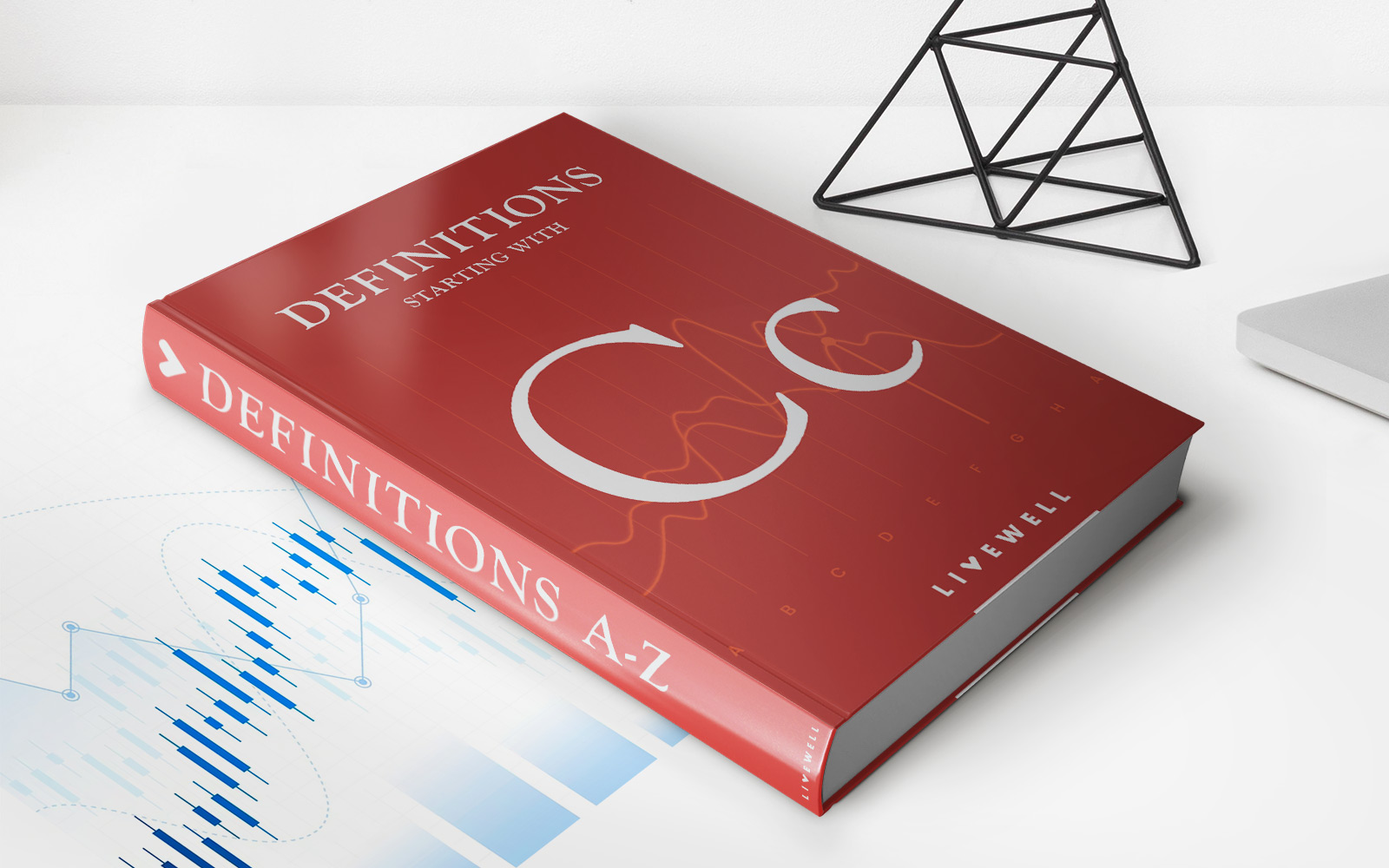

Finance
How To Credit Photo
Published: January 5, 2024
Learn how to properly credit a photo in the finance industry with our easy-to-follow guide. Avoid copyright issues and give proper acknowledgment to photographers.
(Many of the links in this article redirect to a specific reviewed product. Your purchase of these products through affiliate links helps to generate commission for LiveWell, at no extra cost. Learn more)
Table of Contents
- Introduction
- Understanding Photo Credits
- Importance of Crediting Photos
- How to Credit Photos Properly
- Determining the Photographer’s Name
- Including the Title of the Photograph
- Mentioning the Source or Publication
- Adding the Date of Publication or Upload
- Using the Correct Format for the Credit
- Placing the Credit Adjacent to the Photo
- Providing Additional Information (optional)
- Examples of Properly Credited Photos
- Common Mistakes to Avoid
- Conclusion
Introduction
Photography plays a crucial role in visually communicating ideas, stories, and emotions. Whether it’s for personal or professional use, we often find ourselves using photographs in various contexts – from blogs and websites to social media posts and presentations. However, it’s important to remember that these photographs are the creative and intellectual property of the photographers who captured them.
In the world of online content, giving credit where it’s due is not just an obligation but also a way to foster a respectful and ethical environment for photographers. This is where photo credits come into play. Photo credits are acknowledgments given to the photographers who took the photos, ensuring that they receive proper recognition for their work.
Understanding how to credit photos properly is a valuable skill to have, both as a creator and a consumer of visual media. In this article, we will explore the importance of crediting photos and provide you with a step-by-step guide on how to credit photos correctly, in adherence to industry standards.
Understanding Photo Credits
Photo credits are a way of acknowledging and giving proper attribution to the photographers who took the photos. They are a form of recognition and respect for their creative work and intellectual property rights. When you use someone else’s photo in your content, whether it’s online or offline, it is crucial to provide a clear and accurate credit.
Photo credits typically include the photographer’s name, the title of the photograph, the source or publication where the photo is from, and the date of publication or upload. These details help to specifically identify the original source of the photo and the person responsible for capturing it.
Photo credits serve multiple purposes. First and foremost, they give credit where it’s due. Photographers put in time, effort, and skill to capture stunning visuals, and proper credit ensures that they are acknowledged for their creative contributions. Additionally, photo credits provide transparency and enable viewers to trace the origin of the photo for further reference or contact with the photographer.
Furthermore, photo credits help to build a culture of respect, integrity, and professionalism in the photography community. By properly crediting photos, we demonstrate our commitment to ethical practices and encourage others to do the same.
It’s important to note that photo credits are not solely about legal requirements. While copyright laws vary by jurisdiction, giving proper credit is a matter of moral and ethical responsibility. It’s the right thing to do, and it supports the growth and sustainability of the photography industry as a whole.
Importance of Crediting Photos
Crediting photos is not only a legal requirement but also a fundamental ethical practice that holds immense importance. Here are several key reasons why crediting photos is crucial:
1. Giving Credit to the Photographer: Crediting photos properly gives acknowledgement and recognition to the photographer for their talent, creativity, and hard work. It shows appreciation for their skills and encourages them to continue producing exceptional visuals.
2. Respecting Intellectual Property Rights: When you use someone else’s photo without proper credit, you are infringing upon their intellectual property rights. Similar to how you want your own creative work to be respected, it’s essential to uphold these rights for others as well.
3. Foster Collaboration and Networking: By crediting photos, you increase the chances of connecting and collaborating with talented photographers. It creates a positive impression and helps build relationships within the photography community.
4. Promote Professionalism: Crediting photos demonstrates professionalism in your content and shows that you value the contributions of others. It sets a positive example for others to follow and promotes a culture of ethical practices in the industry.
5. Provide Transparency and Trust: Properly crediting photos allows viewers to trace the origin of the image and verify its authenticity. It builds trust with your audience and establishes a transparent environment where the original source can be easily identified.
6. Avoid Legal Issues: Copyright laws protect the rights of photographers, and failure to credit photos can lead to legal consequences. By ensuring accurate attribution, you protect yourself from potential copyright infringement claims.
7. Support the Photography Industry: The photography industry relies on the talent and dedication of photographers. By crediting photos, you contribute to the growth and sustainability of this industry, ensuring that photographers receive the recognition they deserve for their contributions.
Remember: Properly crediting photos is not just an obligation; it serves as a testament to your integrity and respect as a content creator or consumer. By giving credit where it’s due, you contribute to a positive and supportive creative community.
How to Credit Photos Properly
Properly crediting photos ensures that photographers receive the recognition they deserve for their creative work. Follow these steps to credit photos accurately:
- Determining the Photographer’s Name: The first step is to identify the photographer’s name. This information can often be found in the metadata of the photo, the caption, or by contacting the source or publication where you obtained the photo.
- Including the Title of the Photograph: If the photograph has a specific title, include it in the photo credit. This helps to give more precise information about the content and context of the photo.
- Mentioning the Source or Publication: Specify the source or publication from which the photo originated. This could be the website, magazine, social media platform, or any other medium where the photo was originally published or shared.
- Adding the Date of Publication or Upload: When possible, include the date when the photo was published or uploaded online. This helps to establish the timeliness and relevance of the photo.
- Using the Correct Format for the Credit: The most common format for photo credits is to place the photographer’s name first, followed by the title of the photograph (if applicable), then the source or publication, and finally the date of publication or upload. Use commas or other punctuation marks to separate these elements.
- Placing the Credit Adjacent to the Photo: Ensure that the photo credit is visible and located in close proximity to the photo itself. This helps to establish a clear connection between the photo and its accreditation.
- Providing Additional Information (optional): Depending on the context and requirements, you may include additional information such as the photographer’s website or social media handle, a brief description of the photo, or any copyright information associated with the photo.
Remember, consistency is key when it comes to crediting photos. Ensure that all your photo credits follow the same format and style throughout your content to maintain professionalism and clarity.
Determining the Photographer’s Name
Before you can properly credit a photo, it is essential to determine the photographer’s name. This step is crucial as it gives due acknowledgment to the person behind the lens. Here are a few methods to help you find the photographer’s name:
- Check the Photo Metadata: Most digital photographs contain embedded metadata that includes information about the photographer. This metadata can be accessed using various photo editing software or by right-clicking on the image and selecting “Properties” or “Get Info.”
- Refer to the Caption or Description: If you obtained the photo from a website, magazine, or any other publication, check if there is a caption or description accompanying the photo. Often, the photographer’s name is mentioned in these details.
- Reach Out to the Source or Publication: If you are unable to find the photographer’s name through the previous methods, consider contacting the source or publication from which you obtained the photo. They may be able to provide you with the necessary information or connect you with the photographer directly.
- Reverse Image Search: If you found the photo on the internet and it lacks proper attribution, you can perform a reverse image search using search engines or specialized tools. This search may lead you to the original source, where the photographer’s name could be mentioned.
- Utilize Social Media: Social media platforms like Instagram, Flickr, and Twitter are often used by photographers to showcase their work. Try searching for the photographer’s username or handle on these platforms to find their name and additional information.
By following these methods, you will be able to determine the photographer’s name accurately. Remember, giving credit to the photographer is the first step in acknowledging their talent and respecting their intellectual property rights.
Including the Title of the Photograph
When crediting a photo, it is important to include the title of the photograph if one exists. Including the title adds another layer of specificity and context to the photo credit. Here’s why including the title is important and how to go about it:
Importance of Including the Title:
The title of a photograph provides additional information about its subject matter or the intention of the photographer. It helps to convey the story, emotion, or concept behind the image. By including the title in the photo credit, you give credit to the photographer’s creative vision and allow viewers to have a deeper understanding of the photo.
How to Determine the Title:
Identifying the title of a photograph can be done through the following methods:
- Photo Caption: If the photo is accompanied by a caption, check if the caption includes a title for the photograph. The caption might provide a brief description or context that reveals the title.
- Photographer’s Statement: Some photographers may include a statement or description of their work where they mention the title. Look for any accompanying text or artist’s statement by the photographer that may reveal the title.
- Source or Publication: If you obtained the photo from a specific source or publication, such as a website or magazine, check if they have mentioned the title of the photograph alongside it.
- Photographer’s Website or Portfolio: Visit the photographer’s website or online portfolio to see if they have provided titles for their photographs. Many photographers organize their portfolio by assigning titles to each image.
- Additional Research: In some cases, the title of a photograph may not be readily available. In such instances, conducting further research on the photo, photographer, or exhibition it was displayed in may help in finding the title.
Once you have determined the title of the photograph, include it in the photo credit along with other attribution details. This will provide a more comprehensive and accurate acknowledgment of the photographer’s work.
Mentioning the Source or Publication
In addition to crediting the photographer, it is crucial to mention the source or publication from where the photo originated. This step ensures that the photo is properly attributed and allows viewers to trace its origin. Here’s why mentioning the source or publication is important and how to do it accurately:
Importance of Mentioning the Source or Publication:
By mentioning the source or publication, you provide transparency and give credit to the platform that showcased the photo. This information helps to establish credibility and allows viewers to refer back to the original source for more context, related content, or contact with the photographer. It also shows respect for the platform that hosted and curated the photograph.
How to Determine the Source or Publication:
To identify the source or publication, you can follow these steps:
- Website or Blog: If the photo comes from a website or blog, mention the website’s name. It could be the main website or a specific page where the photo was found.
- Magazine or Newspaper: If the photo is from a magazine or newspaper, include the name of the publication. You can also specify the issue or edition if available.
- Social Media Platform: If the photo was sourced from a social media platform, such as Instagram or Twitter, mention the platform name. Additionally, if the photo was shared by an individual or organization, credit their username or handle.
- Specific Publication or Assignment: In some cases, the photo may have been published or shared for a specific assignment, project, or event. Note the name of the assignment, project, or event alongside the source publication.
- Photographer’s Personal Website: If the photographer has a personal website where they display their work, mention their website as the source.
- Multiple Sources: If the photo has been shared across multiple sources or platforms, credit the primary or original source while acknowledging the other sources if necessary.
When mentioning the source or publication, be accurate and provide the name in a clear and consistent manner. This ensures that viewers can easily identify and locate the original source of the photo.
Adding the Date of Publication or Upload
Including the date of publication or upload is an essential aspect of properly crediting a photo. This information provides important context and helps establish the timeline and relevance of the photo. Here’s why adding the date is important and how to do it accurately:
Importance of Adding the Date:
The date of publication or upload provides valuable information about the timeline of the photo. It allows viewers to understand the time period when the photo was taken or made available to the public. This information can be particularly important when referring to current events, historical documentation, or updating outdated content.
How to Determine the Date:
Here are some methods to help you determine the date of publication or upload:
- Photo Metadata: Check the metadata of the photo for any embedded information regarding the date. This can include the date the photo was taken, modified, or created.
- Source or Publication Information: If you obtained the photo from a specific source or publication, they may have mentioned the date of publication along with the photo. Look for this information in the accompanying text or caption.
- Contextual Clues: Consider the context surrounding the photo or any details that can provide clues about the date. This can include events, landmarks, fashion styles, or technology depicted in the photo that can help approximate the time period.
- Reverse Image Search: Perform a reverse image search using search engines or specialized tools. This can help you find relevant information, including the date of publication or upload, from various sources where the photo may have been used.
- Ask the Photographer or Source: If the previous methods don’t provide the necessary information, reach out to the photographer or the source from which you obtained the photo. They may be able to provide the precise date or at least an estimated timeframe.
When including the date, use a consistent and clear format. You can use the full date (e.g., “January 1, 2022”) or a shortened format (e.g., “01/01/22”). This ensures that viewers can easily understand the timeline associated with the photo.
Using the Correct Format for the Credit
Using the correct format for the photo credit is crucial to ensure accurate and consistent attribution. Following a standardized format helps maintain professionalism and clarity in giving credit to the photographer and the source. Here’s how to use the correct format for the credit:
Standard Format for Photo Credits:
The standard format for a photo credit typically follows this order: photographer’s name, title of the photograph (if applicable), source or publication, and date of publication or upload. Here’s an example of a properly formatted photo credit:
“Photo by John Doe
Title: Sunset over the mountains
Source: National Geographic
Date: August 15, 2022″
Tips for Using the Correct Format:
- Order of Elements: Place the photographer’s name first as it is the most important element of the credit. If the photo has a specific title, include it after the photographer’s name. Next, mention the source or publication, followed by the date of publication or upload.
- Punctuation: Use commas or other appropriate punctuation marks to separate the different elements in the credit. This helps to visually separate the information and improve readability.
- Consistency: Maintain consistency in the format throughout your content. Use the same order and style for all photo credits to create a cohesive and professional look.
- Formatting Style: When it comes to formatting the photo credit, you have a couple of options. You can bold or italicize the photographer’s name, title, or source to make them stand out. You can also use a different font size or color to distinguish the photo credit from the rest of the text. Choose a style that aligns with the overall design of your content.
- Adjusting for Space Constraints: If you have limited space to display the photo credit, prioritize the photographer’s name, source, and publication date. The title of the photograph can be omitted if necessary, but make sure to prioritize the main attribution details.
By using the correct format for the photo credit, you ensure that the necessary information is clearly conveyed to viewers and that the photographer and source are appropriately acknowledged.
Placing the Credit Adjacent to the Photo
Proper placement of the photo credit is just as important as the content itself. Placing the credit adjacent to the photo ensures that viewers can easily associate the credit with the specific photo. Here’s why it’s important and how to accurately place the credit:
Importance of Adjacent Placement:
By placing the credit adjacent to the photo, you establish a clear connection between the credit and the photo it corresponds to. This allows viewers to quickly identify the photographer and the source, enhancing the credibility and recognition of their work.
How to Place the Credit Adjacent to the Photo:
Consider the following guidelines when placing the credit:
- Position: Position the credit either above, below, or alongside the photo, depending on the layout and design of your content. Ensure that the credit is visually distinct from the rest of the text or captions.
- Alignment: Align the credit to the left, right, or center of the photo, depending on your aesthetic preference and the overall design. Keep it consistent across all photo credits within your content.
- Font Size and Style: Make the credit easily readable by using an appropriate font size and style. Consider using a slightly larger or bold font for the photographer’s name to give it prominence.
- Punctuation or Separators: Use commas, separators, or bullet points to visually separate the different elements of the credit. This improves readability and helps viewers distinguish between the photographer’s name, title, source, and date.
- Contrast and Color: Ensure that the credit stands out from the background or image. Use contrasting colors or shading to make the text legible. Avoid placing the credit on busy or visually distracting parts of the photo.
If you’re using the photo credit in digital content, you can also consider using HTML elements like captions or alt text to place the credit alongside the photo. This ensures that the credit is accessible and visible to a wider audience.
Remember, the goal is to make the photo credit easily identifiable and distinct from other text elements. By placing it adjacent to the photo, you enhance the overall visual appeal and professionalism of your content.
Providing Additional Information (optional)
In addition to the essential elements of a photo credit, you may choose to include additional information to provide more context or give credit in a more comprehensive way. While these details are optional, they can enhance the credit by offering more information about the photographer or the photo itself. Here are some additional information you can consider including:
- Photographer’s Website or Social Media Handle: If the photographer has a personal website or a social media presence dedicated to showcasing their work, you can include the URL or handle. This allows viewers to explore more of the photographer’s portfolio and connect with them directly.
- Brief Description of the Photo: In some cases, adding a brief description of the photo can provide additional context or highlight specific details. This can be helpful when the photo has a unique subject or captures a particular moment or event.
- Copyright Statement: If the photographer has specific copyright considerations or requests, you can include a copyright statement. This helps to communicate the photographer’s rights and any permissions or restrictions regarding the use of the photo.
- Location: If the photo has a significant or distinctive location associated with it, mentioning the location can add an extra layer of information. This can be especially relevant for travel or landscape photography.
- Additional Credits: If there are other individuals or organizations involved in the creation or publication of the photo, such as stylists, models, or photo agencies, you can acknowledge them by including additional credits.
Remember, the inclusion of additional information is optional and should be relevant to the specific photo and its context. It’s important to strike a balance between providing enough information to enrich the credit and overwhelming viewers with excessive details. Adjust the additional information based on the needs and requirements of your content.
Examples of Properly Credited Photos
Properly crediting photos is essential in respecting the work of photographers and maintaining ethical practices. Here are some examples of properly credited photos:
Example 1:
Photo by Jane Smith
Source: National Geographic
Date: July 10, 2022
Example 2:
Photo by John Doe
Title: Serene Beach Sunset
Source: Shutterstock
Date: October 5, 2022
Example 3:
Photo by Mary Johnson
Source: Unsplash
Date: August 20, 2022
Photographer’s Website: www.maryjohnsonphotography.com
Example 4:
Photo by Alex Rodriguez
Title: Vibrant Market Scene
Source: Travel Magazine
Date: September 15, 2022
Location: Marrakech, Morocco
Example 5:
Photo by Sarah Thompson
Source: Getty Images
Date: November 1, 2022
Copyright: © Sarah Thompson
These examples demonstrate the different elements that can be included in a photo credit, such as the photographer’s name, title (if applicable), source or publication, date of publication or upload, location, and additional information. Remember, the key is to maintain consistency in format and ensure all relevant attribution details are provided.
Common Mistakes to Avoid
When it comes to properly crediting photos, it’s important to be aware of common mistakes that can occur. Avoiding these mistakes ensures that photographers receive the appropriate recognition for their work. Here are some common mistakes to avoid:
- Omitting the Photographer’s Name: One of the most significant mistakes is failing to credit the photographer altogether. Always make a diligent effort to determine the photographer’s name and include it in the photo credit.
- Inaccurate or Missing Source Information: Failing to mention the correct source or publication from which the photo originated undermines the credibility and integrity of the credit. Double-check the source information to ensure accuracy.
- Incorrect Date: Providing an incorrect or missing publication or upload date can misrepresent the timeline of the photo. Take the time to verify and include the accurate date to establish the context and relevance of the photo.
- Inconsistent Formatting: Lack of consistency in formatting, such as varying font styles, sizes, or punctuation, can make the photo credit appear unprofessional and confusing. Maintain a standard format and style throughout all photo credits.
- Misplacing the Credit: Placing the photo credit too far from the photo or not clearly associating it with the specific image can lead to confusion. Make sure the credit is adjacent to the photo and visually distinguishes itself.
- Excessive or Irrelevant Information: Including unnecessary information in the photo credit can clutter the attribution and distract viewers from the essential details. Keep the credit concise, relevant, and focused on the photographer, source, and key details.
- Failure to Ask for Permission: If you are using a photo obtained directly from a photographer or an online photography platform, always seek permission or adhere to any usage guidelines provided. Respect the rights and terms specified by the photographer.
- Ignoring Copyright Laws: Ignoring copyright laws and using photos without proper attribution or permission can lead to legal consequences. Familiarize yourself with copyright regulations in your jurisdiction and always adhere to them.
By avoiding these common mistakes, you can ensure that the photo credit is accurate, respectful, and adheres to industry standards, thus giving proper recognition to the photographers and maintaining professionalism in your content.
Conclusion
Properly crediting photos is not only an ethical practice but also a way to show respect and appreciation for the photographers who capture stunning visuals. By following the guidelines outlined in this article, you can ensure that photographers receive the recognition they deserve while maintaining a professional standard in your content.
Remember to determine the photographer’s name, include the title of the photograph if applicable, mention the source or publication, and provide the date of publication or upload. Use the correct format for the credit, place it adjacent to the photo, and optionally include additional information to provide more context.
Avoid common mistakes such as omitting the photographer’s name, inaccurate source information, inconsistent formatting, and misplacing the credit. Seek permission when necessary and always respect copyright laws.
By crediting photos properly, you support the growth and sustainability of the photography industry, foster a culture of respect and professionalism, and uphold the rights of photographers. Showcasing their work with accurate attribution enriches the visual content landscape and creates a harmonious environment for all those involved.
So, let’s continue to give credit where it’s due and celebrate the incredible talent and creativity of photographers around the world by providing proper and accurate photo credits.














